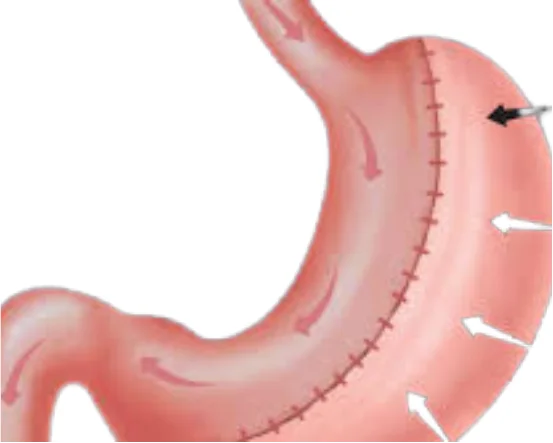Endourology, a sub specialty of urology, deals with the closed manipulation of the urinary tract using minimally invasive techniques. Unlike traditional surgeries that involve large incisions, endourology uses small instruments and scopes that are inserted into the body via natural openings or small puncture sites. These techniques have revolutionized how conditions like kidney stones, ureteral strictures, and bladder tumors are diagnosed and treated.
When it comes to diagnosing conditions of the urinary tract such as kidney stones, ureteral blockages, bladder tumors, and congenital abnormalities precision is critical. That’s where endourology truly shines. With the help of high resolution imaging systems, flexible and rigid scopes, and real time visualization tools, urologists can accurately identify, assess, and often treat issues during the same procedure.
What is Endourology?
Endourology focuses on diagnosing and treating urinary tract diseases through endoscopic or catheter-based procedures. It involves the use of specialized scopes such as cystoscopes, ureteroscopes, and nephroscopes to visualize the internal structures of the kidneys, ureters, bladder, and urethra. These scopes help urologists detect abnormalities with high precision and guide appropriate interventions when needed.
Importance of Early and Accurate Diagnosis
Accurate diagnosis is critical in endourology to ensure timely and targeted treatment. Whether the condition is as common as kidney stones or as serious as urothelial carcinoma, early diagnosis can help avoid complications, reduce the need for invasive surgery, and improve patient outcomes. Diagnostic techniques in endourology not only identify the underlying issue but also allow for therapeutic procedures to be performed during the same session in many cases.
Diagnosis of Endourology
The success of endourological procedures heavily depends on the use of advanced imaging and diagnostic technologies. These tools offer real-time visualization and detailed insights into the urinary tract anatomy and function.
- Ultrasonography (USG) :- Ultrasound is often the first-line diagnostic imaging used to evaluate the kidneys, bladder, and prostate. It is non invasive and provides real-time information about the size, shape, and presence of abnormalities such as hydronephrosis or stones. While USG is highly useful, it may be limited in detecting smaller stones or subtle lesions.
- Intravenous Urography (IVU) :- IVU involves the injection of a contrast dye into the bloodstream followed by X-ray imaging. This test helps in identifying blockages, structural anomalies, or tumors within the urinary tract. Though CT scans have largely replaced IVU in many centers, it is still used where CT is not readily available.
- CT Urography :- CT urography is considered the gold standard in diagnosing complex urological conditions. It offers high-resolution, cross sectional images of the kidneys, ureters, and bladder, making it extremely effective in detecting kidney stones, tumors, or congenital abnormalities. CT scans are especially useful in planning endourological procedures.
- Magnetic Resonance Urography (MRU) :- MRU uses magnetic fields and radio waves to create detailed images of the urinary tract. It is particularly useful for patients who cannot undergo CT due to contrast allergies or radiation concerns. MRU is excellent for evaluating soft tissue structures and functional issues.
- Cystoscopy :- Cystoscopy is a direct visualization technique that involves inserting a thin, flexible tube with a camera (cystoscope) into the bladder via the urethra. It allows the urologist to inspect the bladder lining for inflammation, tumors, stones, or strictures. Cystoscopy can be both diagnostic and therapeutic.
Endoscopic Diagnostic Procedures
Endoscopic procedures form the core of endourological diagnosis. These allow the urologist to not only see inside the urinary tract but also to obtain biopsies, remove obstructions, and guide other therapeutic tools.
- Ureteroscopy :- Ureteroscopy involves the use of a thin ureteroscope to examine the ureters and kidneys. It is often performed to diagnose and treat ureteral stones or tumors. The procedure provides a direct view and can be used to collect tissue samples or break stones using laser lithotripsy.
- Nephroscopy :- Nephroscopy is performed via a small incision in the back to access the kidney directly. It is used when other less invasive diagnostic methods are insufficient. This technique allows visualization and treatment of kidney stones, tumors, or congenital abnormalities.
- Retrograde Pyelography :- This diagnostic procedure involves injecting a contrast dye into the ureters via a cystoscope to highlight the urinary tract under fluoroscopy (X-ray guidance). It is especially useful when CT or IVU is inconclusive, particularly in patients with renal insufficiency where contrast administration via veins may be risky.
Common Conditions Diagnosed via Endourology
Several urological conditions can be accurately diagnosed using endourological techniques. These include :-
-
Kidney stones :- Ureteroscopy and CT urography help determine the size, location, and type of stones.
-
Bladder tumors :- Cystoscopy is essential for identifying and biopsying bladder lesions.
-
Ureteral strictures :- Narrowing of the ureters can be diagnosed via retrograde pyelography or ureteroscopy.
-
Hematuria (blood in urine) :- Cystoscopy and imaging techniques help identify the source of bleeding.
-
Congenital abnormalities :- Anomalies such as ureteropelvic junction obstruction can be evaluated with nephroscopy or MRU.
Diagnostic Biopsies in Endourology
Tissue biopsy is an important part of diagnosing malignancies or suspicious lesions within the urinary tract. Endourological methods allow for minimally invasive biopsy procedures. For example, during cystoscopy or ureteroscopy, forceps can be passed through the scope to collect tissue samples from the bladder, ureters, or renal pelvis for histopathological examination.
Advances in Endourological Diagnostics
The field of endourology is rapidly evolving with advancements in optics, imaging software, and robotics. High-definition cameras, narrow-band imaging, and digital ureteroscopes offer improved visualization and diagnostic accuracy. Additionally, image-guided navigation systems allow for safer and more precise access to the urinary tract.
Benefits of Endourological Diagnosis
There are several advantages to using endourological techniques for diagnosis :-
-
Minimally invasive :- Most procedures do not require large incisions or extended hospital stays.
-
Reduced recovery time :- Patients typically resume normal activities sooner.
-
High accuracy :- Direct visualization of the urinary tract improves diagnostic certainty.
-
Therapeutic potential :- Many conditions can be treated during the same diagnostic procedure.
Conclusion
Endourology offers a less invasive, highly accurate approach to diagnosing a wide range of urinary tract conditions. With the aid of modern imaging and endoscopic technologies, urologists can detect diseases early, plan targeted treatments, and reduce patient discomfort significantly.























